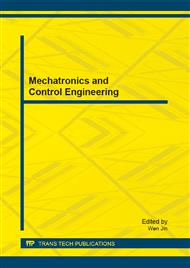p.683
p.687
p.691
p.695
p.700
p.706
p.717
p.721
p.728
Effect of the Heat Input in the Transformation of Retained Austenite in Advanced Steels of Transformation Induced Plasticity (TRIP) Welded with Gas Metal Arc Welding
Abstract:
The effect of heat input on the transformation of retained austenite steels transformation induced plasticity (TRIP) was investigated in the heat affected zone (HAZ) of the Gas Metal Arc Welding GMAW process. The determination of retained austenite of the HAZ is important in optimizing the welding parameters when welding TRIP steels, because this will greatly influence the mechanical properties of the welding joint due to the transformation of residual austenite into martensite due to work hardening. Coupons were welded with high and low heat input for investigating the austenite transformation of the base metal due to heat applied by the welding process and was evaluated by optical microscopy and the method of X-Ray Diffraction (XRD). Data analyzed shows that the volume fraction of retained austenite in the HAZ increases with the heat input applied by the welding process, being greater as the heat input increase and decrease the cooling rate, this due to variation in the travel speed of the weld path.
Info:
Periodical:
Pages:
700-705
Citation:
Online since:
July 2013
Authors:
Keywords:
Price:
Сopyright:
© 2013 Trans Tech Publications Ltd. All Rights Reserved
Share:
Citation:


